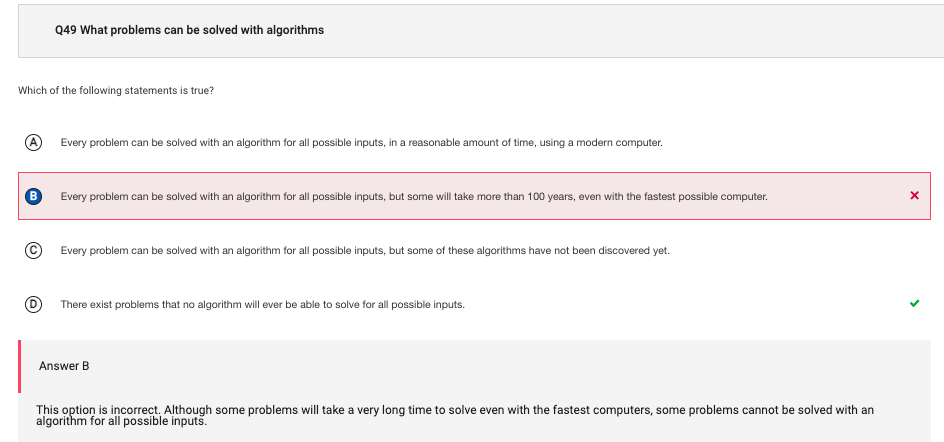50 Question MCQ Blogging
Blogged mistakes
Q10
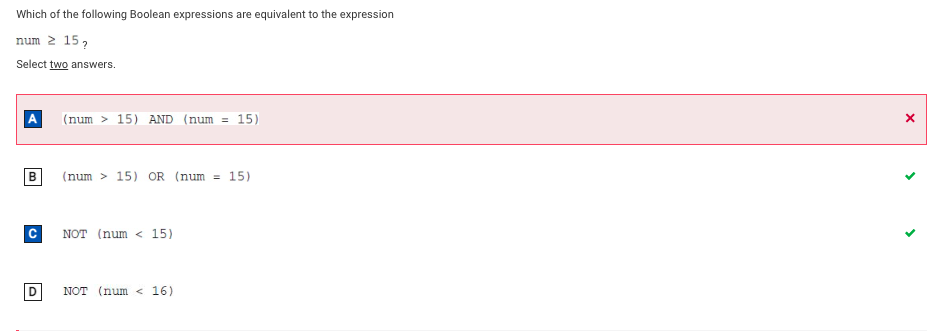
Correct Answer: Greater than OR equal to should not be solved but two conditionals but two separate “or” statements
Q17
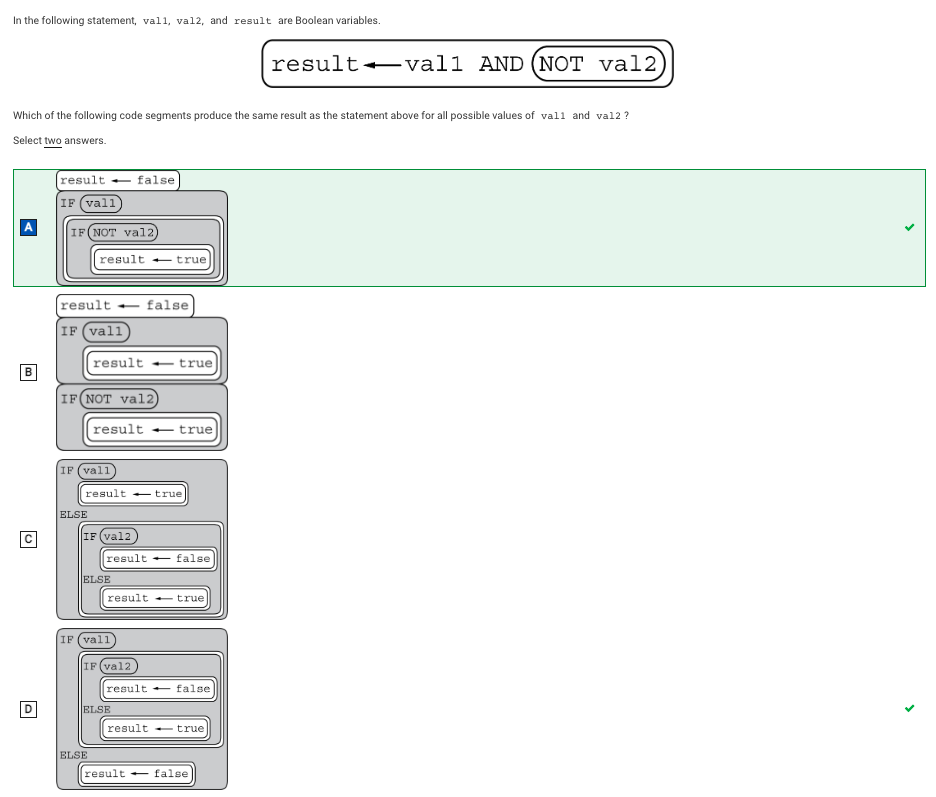
Correct Answer: Honestly I didn’t see the questions where it said select two so I didn’t even look for a second answer
Q19
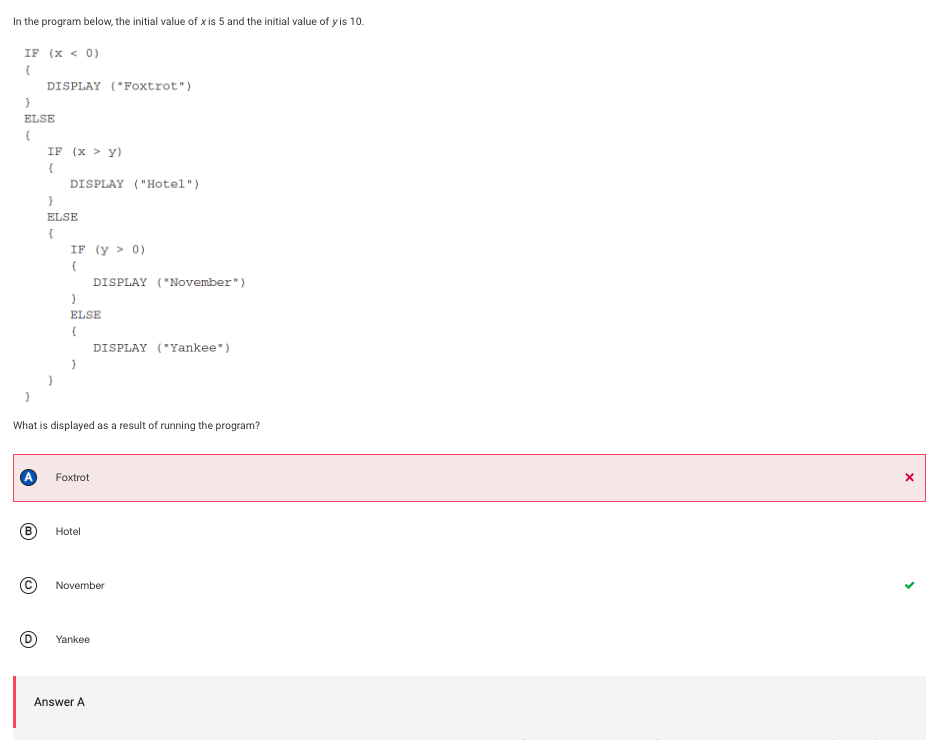
Correct Answer: Thought < was > for some reasons so in my head I was seeing “15 > 0”, leading to why I got Foxtrot
Q23
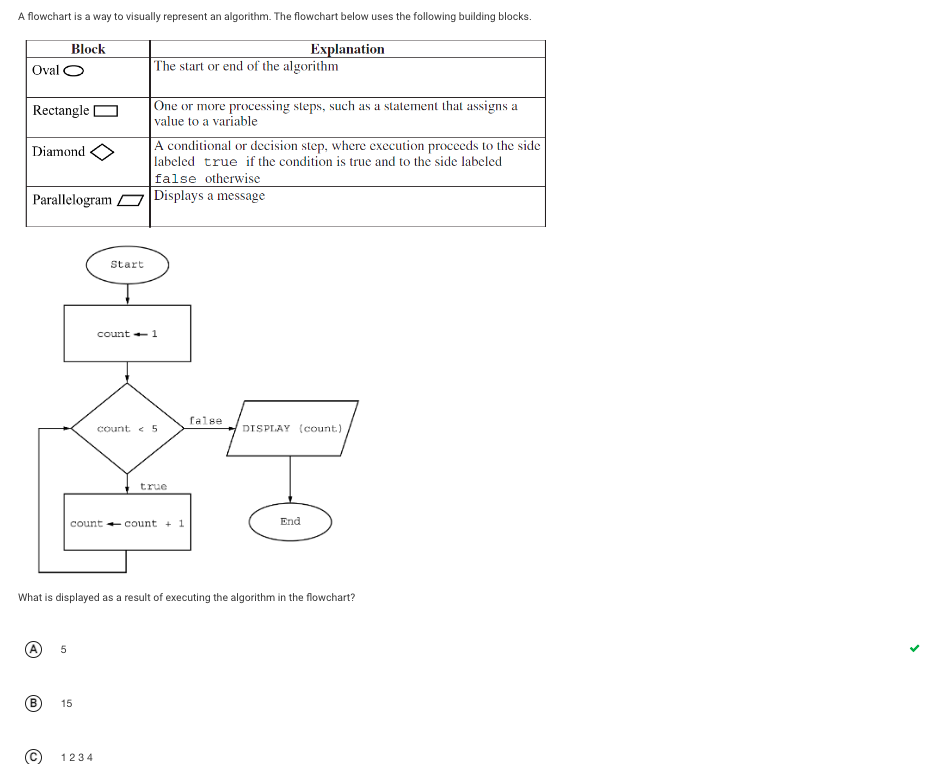
Correct Answer: The display wouldn’t show 4 outputs anyways, not sure why I put that answer, 5 should be the only output because that is why would end the flowchart
Q32

Correct Answer: Both programs function accordingly but in different ways. One starts at the top and the other starts from the bottom, even though they differ by “i-1” and “i+1”, they both work after reading the explanation.
Q38
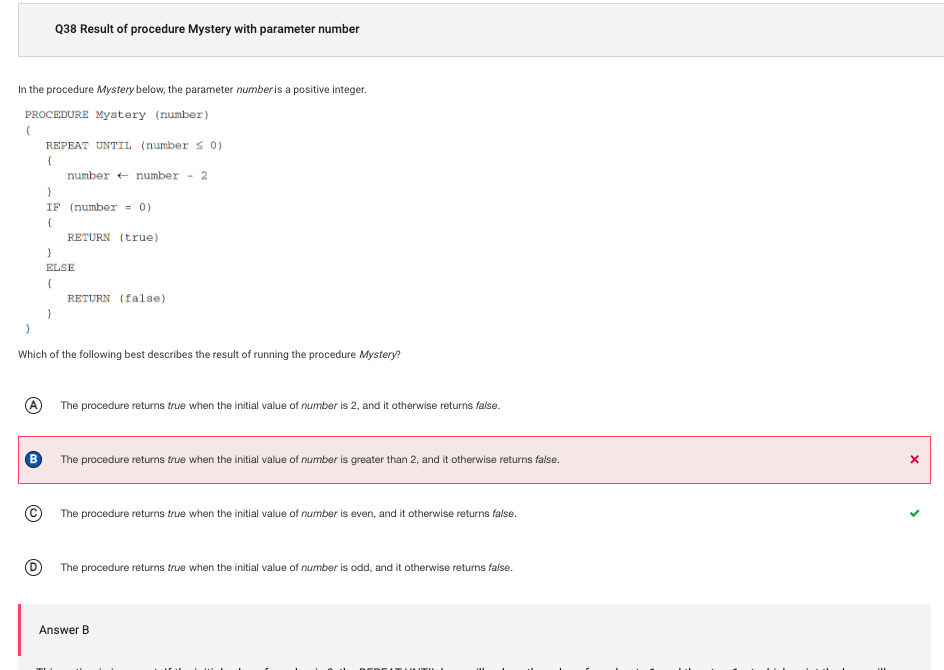
Correct Answer: If the input is even, then it will be true. If it is odd, then it would be false
Q41.
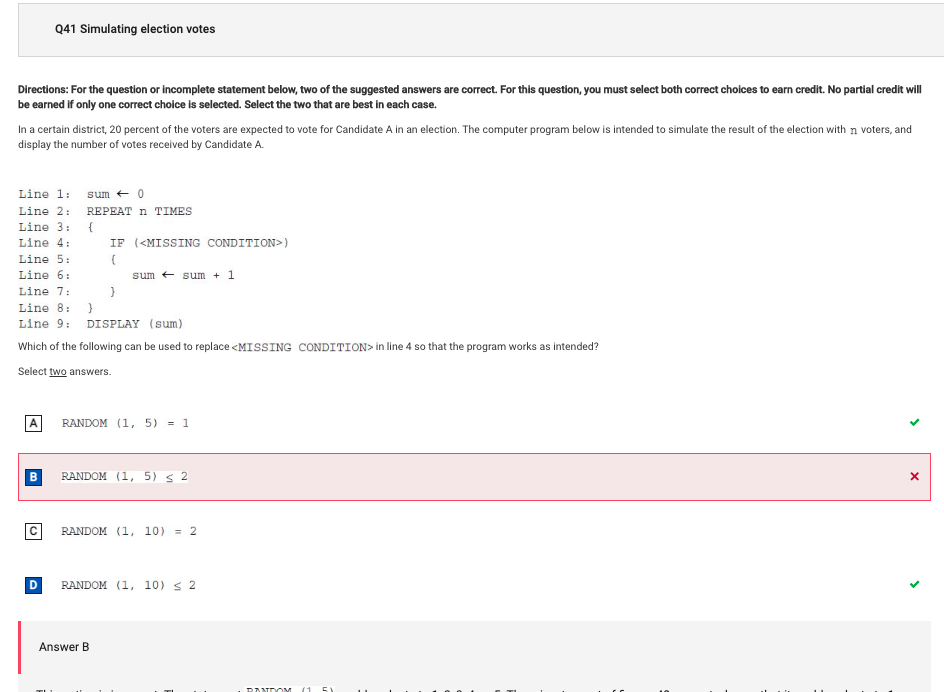
Correct Answer: a random int of (1,5) needs to keep a constant 40% of 10, so the range could only have 1. Meaning (1,5) = 1
Q42
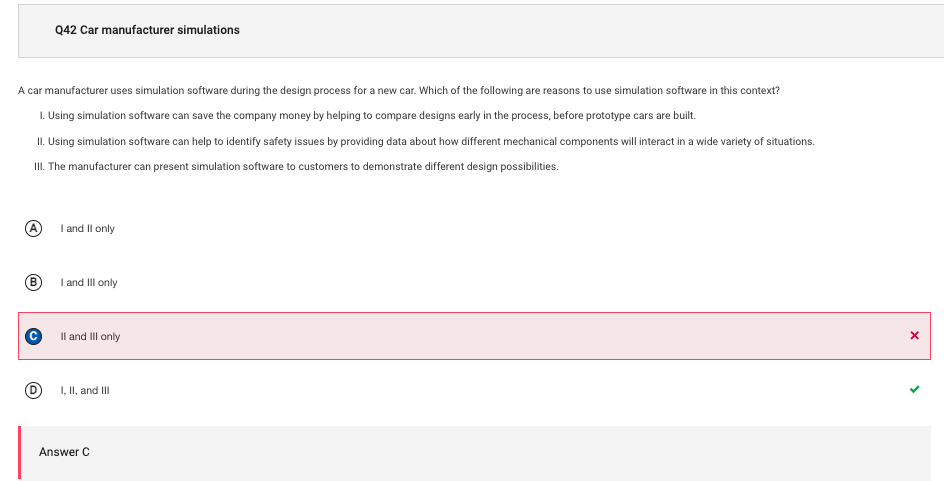
Correct Answer: 1 also works in this situation because the company can simulate certain car looks to further benefit customers
Q43
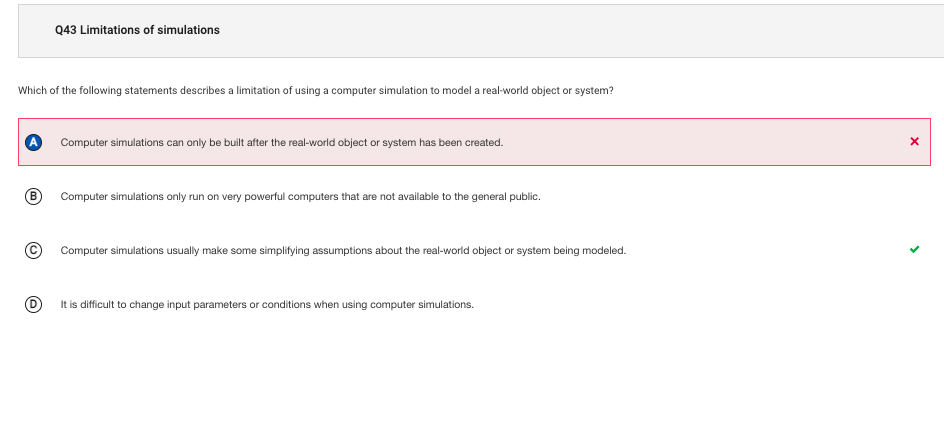
Correct Answer: Not sure what I was thinking here to be honest, computer simulations can account for simple solutions based on inputs or certain scenarios regarding more details
Q45
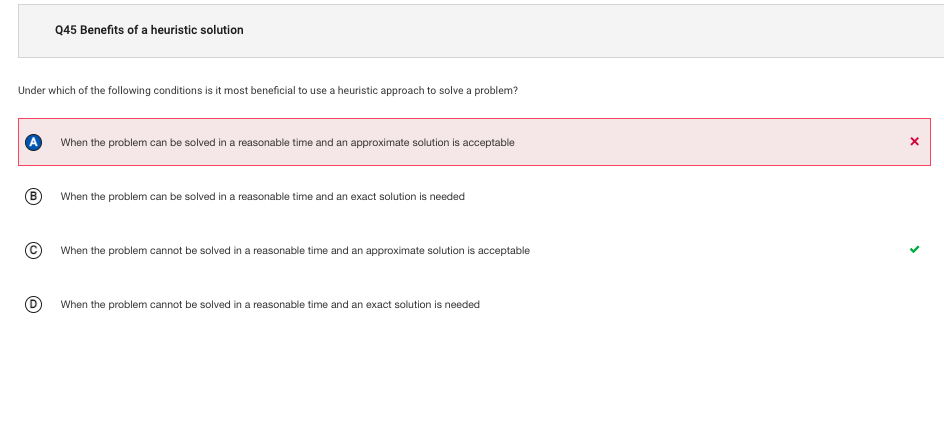
Correct Answer: The whole point of an heuristic approach is to approach a hard situation with a some what meh answer that works. Hence why the answer is not “can be solved in a reasonable time”
Q46
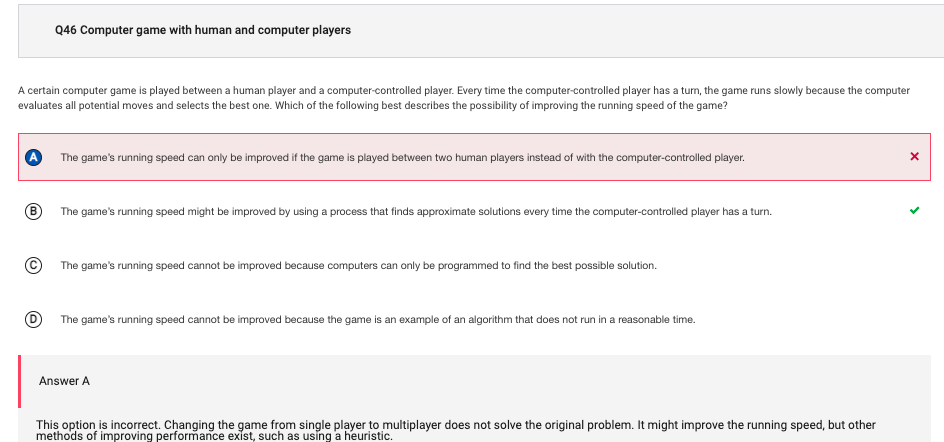
Correct Answer: My answer completely ignores the problem. The right answer would be to run through scenarios while the user is taking their turn to further shorten AI time
Q49
